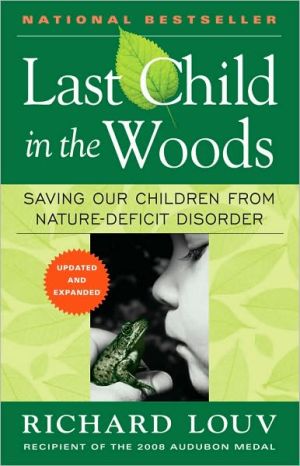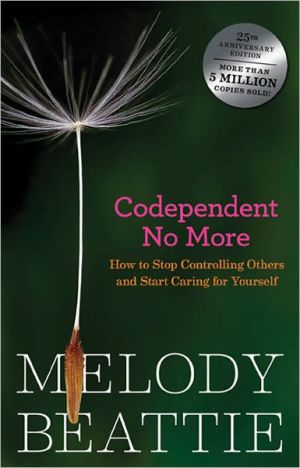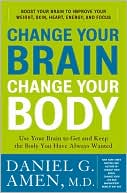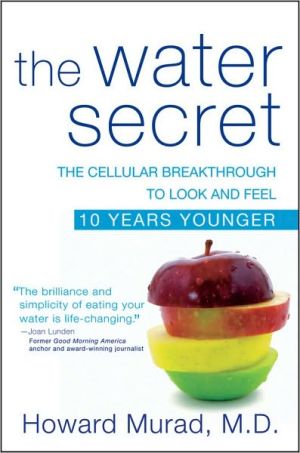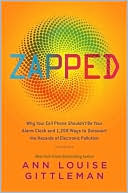Last Child in the Woods: Saving Our Children From Nature-Deficit Disorder
In his groundbreaking work about the staggering divide between children and the outdoors, journalist and child advocate Richard Louv directly links the absence of nature in the lives of today's wired generatoin to some of the most disturbing childhood trends: the rise in obesity, attention disorders, and depression. This is the first book to bring together a body of research indicating that direct exposure to nature is essential for healthy childhood development and for the physical and...
Search in google:
Richard Louv was the first to identify a phenomenon we all knew existed but couldn't quite articulate: nature-deficit disorder. His book Last Child in the Woods created a national conversation about the disconnection between children and nature, and his message has galvanized an international movement. Now, three years after its initial publication, we have reached a tipping point, with Leave No Child Inside initiatives adopted in at least 30 regions within 21 states, and in Canada, Holland, Australia, and Great Britain.This new edition reflects the enormous changes that have taken place since the book—and this grassroots movement— were launched. It includes: • 101 Things you can do to create change in your community, school, and family. • Discussion points to inspire people of all ages to talk about the importance of nature in their lives. • A new afterword by the author about the growing Leave No Child Inside movement. • New and updated research confirming that direct exposure to nature is essential for the physical and emotional health of children and adults.This is a book that will change the way you think about your future and the future of your children. Publishers Weekly Today's kids are increasingly disconnected from the natural world, says child advocacy expert Louv (Childhood's Future; Fatherlove; etc.), even as research shows that thoughtful exposure of youngsters to nature can... be a powerful form of therapy for attention-deficit disorder and other maladies. Instead of passing summer months hiking, swimming and telling stories around the campfire, children these days are more likely to attend computer camps or weight-loss camps: as a result, Louv says, they've come to think of nature as more of an abstraction than a reality. Indeed, a 2002 British study reported that eight-year-olds could identify PokEmon characters far more easily than they could name otter, beetle, and oak tree. Gathering thoughts from parents, teachers, researchers, environmentalists and other concerned parties, Louv argues for a return to an awareness of and appreciation for the natural world. Not only can nature teach kids science and nurture their creativity, he says, nature needs its children: where else will its future stewards come from? Louv's book is a call to action, full of warnings but also full of ideas for change. Agent, James Levine. (May 20) Copyright 2005 Reed Business Information.
INTRODUCTION\ One evening when my boys were younger, Matthew, then ten, looked at me from across a restaurant table and said quite seriously, “Dad, how come it was more fun when you were a kid?”\ I asked what he meant.\ “Well, you’re always talking about your woods and tree houses, and how you used to ride that horse down near the swamp.”\ At first, I thought he was irritated with me. I had, in fact, been telling him what it was like to use string and pieces of liver to catch crawdads in a creek, something I’d be hard-pressed to find a child doing these days. Like many parents, I do tend to romanticize my own childhood— and, I fear, too readily discount my children’s experiences of play and adventure. But my son was serious; he felt he had missed out on something important.\ He was right. Americans around my age, baby boomers or older, enjoyed a kind of free, natural play that seems, in the era of kid pagers, instant messaging, and Nintendo, like a quaint artifact.\ Within the space of a few decades, the way children understand and experience nature has changed radically. The polarity of the relationship has reversed. Today, kids are aware of the global threats to the environment— but their physical contact, their intimacy with nature, is fading. That’s exactly the opposite of how it was when I was a child.\ As a boy, I was unaware that my woods were ecologically connected with any other forests. Nobody in the 1950s talked about acid rain or holes in the ozone layer or global warming. But I knew my woods and my fields; I knew every bend in the creek and dip in the beaten dirt paths. I wandered those woods even in my dreams. A kid today can likely tell you about the Amazon rain forest—but not about the last time he or she explored the woods in solitude, or lay in a field listening to the wind and watching the clouds move.\ This book explores the increasing divide between the young and the natural world, and the environmental, social, psychological, and spiritual implications of that change. It also describes the accumulating research that reveals the necessity of contact with nature for healthy child—and adult—development.\ While I pay particular attention to children, my focus is also on those Americans born during the past two to three decades. The shift in our relationship to the natural world is startling, even in settings that one would assume are devoted to nature. Not that long ago, summer camp was a place where you camped, hiked in the woods, learned about plants and animals, or told firelight stories about ghosts or mountain lions. As likely as not today, “summer camp” is a weight-loss camp, or a computer camp. For a new generation, nature is more abstraction than reality. Increasingly, nature is something to watch, to consume, to wear —to ignore. A recent television ad depicts a four-wheel-drive SUV racing along a breathtakingly beautiful mountain stream—while in the backseat two children watch a movie on a flip-down video screen, oblivious to the landscape and water beyond the windows.\ A century ago, the historian Frederick Jackson Turner announced that the American frontier had ended. His thesis has been discussed and debated ever since. Today, a similar and more important line is being crossed.\ Our society is teaching young people to avoid direct experience in nature. That lesson is delivered in schools, families, even organizations devoted to the outdoors, and codified into the legal and regulatory structures of many of our communities. Our institutions, urban/suburban design, and cultural attitudes unconsciously associate nature with doom—while disassociating the outdoors from joy and solitude. Wellmeaning public-school systems, media, and parents are effectively scaring children straight out of the woods and fields. In the patent-or-perish environment of higher education, we see the death of natural history as the more hands-on disciplines, such as zoology, give way to more theoretical and remunerative microbiology and genetic engineering. Rapidly advancing technologies are blurring the lines between humans, other animals, and machines. The postmodern notion that reality is only a construct—that we are what we program—suggests limitless human possibilities; but as the young spend less and less of their lives in natural surroundings, their senses narrow, physiologically and psychologically, and this reduces the richness of human experience.\ Yet, at the very moment that the bond is breaking between the young and the natural world, a growing body of research links our mental, physical, and spiritual health directly to our association with nature— in positive ways. Several of these studies suggest that thoughtful exposure of youngsters to nature can even be a powerful form of therapy for attention-deficit disorders and other maladies. As one scientist puts it, we can now assume that just as children need good nutrition and adequate sleep, they may very well need contact with nature.\ Reducing that deficit—healing the broken bond between our young and nature—is in our self-interest, not only because aesthetics or justice demands it, but also because our mental, physical, and spiritual health depends upon it. The health of the earth is at stake as well. How the young respond to nature, and how they raise their own children, will shape the configurations and conditions of our cities, homes—our daily lives. The following pages explore an alternative path to the future, including some of the most innovative environment-based school programs; a reimagining and redesign of the urban environment—what one theorist calls the coming “zoopolis”; ways of addressing the challenges besetting environmental groups; and ways that faith-based organizations can help reclaim nature as part of the spiritual development of children. Parents, children, grandparents, teachers, scientists, religious leaders, environmentalists, and researchers from across the nation speak in these pages. They recognize the transformation that is occurring. Some of them paint another future, in which children and nature are reunited— and the natural world is more deeply valued and protected.\ During the research for this book, I was encouraged to find that many people now of college age—those who belong to the first generation to grow up in a largely de-natured environment—have tasted just enough nature to intuitively understand what they have missed. This yearning is a source of power. These young people resist the rapid slide from the real to the virtual, from the mountains to the Matrix. They do not intend to be the last children in the woods.\ My sons may yet experience what author Bill McKibben has called “the end of nature,” the final sadness of a world where there is no escaping man. But there is another possibility: not the end of nature, but the rebirth of wonder and even joy. Jackson’s obituary for the American frontier was only partly accurate: one frontier did disappear, but a second one followed, in which Americans romanticized, exploited, protected, and destroyed nature. Now that frontier—which existed in the family farm, the woods at the end of the road, the national parks, and in our hearts—is itself disappearing or changing beyond recognition.\ But, as before, one relationship with nature can evolve into another. This book is about the end of that earlier time, but it is also about a new frontier—a better way to live with nature.
Acknowledgments xiIntroduction 1The New Relationship Between Children and NatureGifts of Nature 7The Third Frontier 15The Criminalization of Natural Play 27Why the Young (and the Rest of Us) Need NatureClimbing the Tree of Health 39A Life of the Senses: Nature vs. the Know-It-All State of Mind 55The "Eighth Intelligence" 71The Genius of Childhood: How Nature Nurtures Creativity 86Nature-Deficit Disorder and the Restorative Environment 99The Best of Intentions: Why Johnnie and Jeannie Don't Play Outside AnymoreTime and Fear 115The Bogeyman Syndrome Redux 123Don't Know Much About Natural History: Education as a Barrier to Nature 133Where Will Future Stewards of Nature Come From? 146The Nature-Child ReunionBringing Nature Home 163Scared Smart: Facing the Bogeyman 178Telling Turtle Tales: Using Nature as a Moral Teacher 189The Jungle BlackboardNatural School Reform 203Camp Revival 227Wonder Land: Opening the Fourth FrontierThe Education of Judge Thatcher: Decriminalizing Natural Play 237Cities Gone Wild 245Where the Wild Things Will Be: A New Back-to-the-Land Movement 271To Be AmazedThe Spiritual Necessity of Nature for the Young 291Fire and Fermentation: Building a Movement 307While It Lasts 315Notes 317Suggested Reading 329Index 333A Field Guide to Last Child in the Woods 345
\ Boston Globe"This book is an absolute must-read for parents." - The Boston Globe\ \ \ \ \ The Washington Post"[The] national movement to 'leave no child inside'…has been the focus of Capitol Hill hearings, state legislative action, grass-roots projects, a U.S. Forest Service initiative to get more children into the woods and a national effort to promote a 'green hour' in each day…The increased activism has been partly inspired by a best-selling book, Last Child in the Woods, and its author, Richard Louv." - The Washington Post\ \ \ The Nation's Health"Last Child in the Woods, which describes a generation so plugged into electronic diversions that it has lost its connection to the natural world, is helping drive a movement quickly flourishing across the nation." - The Nation's Health\ \ \ \ \ Publishers WeeklyToday's kids are increasingly disconnected from the natural world, says child advocacy expert Louv (Childhood's Future; Fatherlove; etc.), even as research shows that thoughtful exposure of youngsters to nature can... be a powerful form of therapy for attention-deficit disorder and other maladies. Instead of passing summer months hiking, swimming and telling stories around the campfire, children these days are more likely to attend computer camps or weight-loss camps: as a result, Louv says, they've come to think of nature as more of an abstraction than a reality. Indeed, a 2002 British study reported that eight-year-olds could identify PokEmon characters far more easily than they could name otter, beetle, and oak tree. Gathering thoughts from parents, teachers, researchers, environmentalists and other concerned parties, Louv argues for a return to an awareness of and appreciation for the natural world. Not only can nature teach kids science and nurture their creativity, he says, nature needs its children: where else will its future stewards come from? Louv's book is a call to action, full of warnings but also full of ideas for change. Agent, James Levine. (May 20) Copyright 2005 Reed Business Information.\ \
